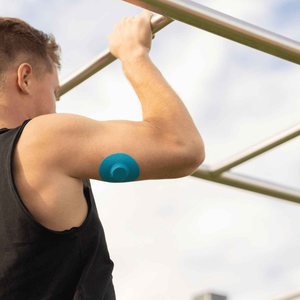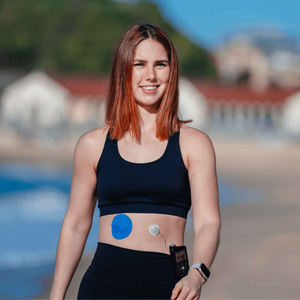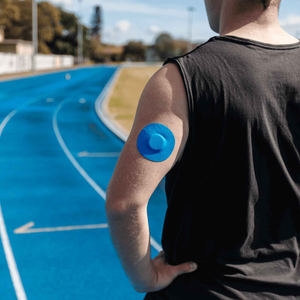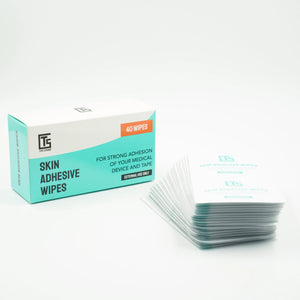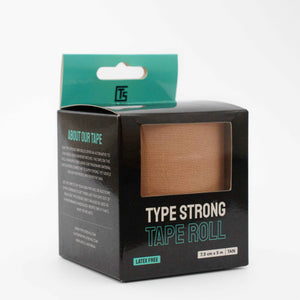If you use the Medtronic Guardian 4, you already know how much easier life feels with continuous glucose monitoring. The Guardian tracks your glucose around the clock, showing you patterns you can actually use. But there’s a catch: if the sensor doesn’t stay in place, none of that matters.
It’s a common story. A sensor patch peeling off after a swim, edges lifting after a sweaty run, or a child’s patch coming loose halfway through school sport. That’s why Medtronic Guardian sensor patches are such a game-changer. They add strength and comfort so your sensor can do its job without constant worry.
Note: This guide is for education only. Always follow Medtronic’s instructions and talk with your healthcare team if you’re unsure about anything.
Why Medtronic Guardian sensor patches matter
Sensors are clever, but skin isn’t always predictable. Oils, lotions, sweat, and friction from clothes can all break down adhesives. Even changes in skin pH can make a difference. Research shows that the way you prepare your skin and the kind of adhesive you use have a direct impact on wear time (Heinemann & Freckmann, 2015).
This is where Medtronic Guardian sensor patches step in. They’re cut to the right shape, breathable enough for comfort, and strong enough to hold during workouts, hot showers, or even long days in the pool. Instead of worrying about your sensor, you can trust it to stay secure.
Tip 1: Prep your skin properly
The tricky part is, even the strongest patch won’t hold if your skin isn’t ready. Oils, residue, or moisturiser act like a barrier. Medtronic recommends applying to clean, dry skin with no lotions or creams (Medtronic Diabetes, 2023).
Here’s a quick routine that works for many users:
- Wash with mild, fragrance-free soap.
- Rinse and pat the area fully dry.
- Skip moisturiser on patch days.
- In hot or humid weather, add an adhesive wipe before sticking down your patch.
Taking just a couple of minutes for prep makes a huge difference in how long Medtronic Guardian sensor patches last. You’ll find a full guide on skin prep here.

Tip 2: Use Guardian-specific patches
You’ve probably seen people try to hold their sensors on with generic tape. The problem? It often peels too soon or blocks the transmitter. That’s why Medtronic Guardian sensor patches designed for the Guardian 4 are worth it.
Our Medtronic Guardian adhesive patches are:
- Latex-free and hypoallergenic for sensitive skin
- Breathable, but sweatproof enough for daily life
- Pre-cut to fit perfectly around your Guardian transmitter
People who switch often say they notice the difference on day one – the patch feels snug without being itchy, and it doesn’t lift after a workout.
Tip 3: Reinforce the edges
Here’s something most users learn quickly: patches rarely fail in the middle. They fail at the edges. It usually happens after a shower or an active day. Once the corner peels, water and sweat creep underneath and the whole patch loosens.
Instead of wasting a new patch, just reinforce it. A tape roll lets you stick down the corner and carry on. Diabetes educators often recommend this trick to extend patch life (ADA Standards of Care, 2025).
With a little reinforcement, Medtronic Guardian sensor patches can easily see you through the full wear time.
Tip 4: Strengthen adhesion with wipes
Some days just put your patches to the test. Think summer heat, gym sessions, or hours at the beach. Adhesive wipes give your patches a boost by leaving a protective, sticky film on your skin.
Experts point out that adhesive enhancers are especially helpful for heavy sweaters or those living in humid climates (Healthline, 2023). That extra layer makes Medtronic Guardian sensor patches grip better, reducing the risk of mid-day lift.
Our skin adhesive wipes are easy to carry in a bag or pocket and take seconds to use.

Tip 5: Rotate your sites
Using the same spot again and again can irritate skin and even affect accuracy. Scar tissue is less adhesive-friendly, and it can also change how glucose is measured. Medtronic suggests alternating sites like the arms, abdomen, or thighs to give each area time to heal (Medtronic Guardian 4 Guide).
Rotating isn’t just good for your skin – it helps Medtronic Guardian sensor patches stick better too. And if you do notice irritation, check out our guide on post-adhesive skin care.
Bonus: Plan for active days
Daily life is one thing. Swimming, summer heat, or full-on sports are another. On those days, it pays to prepare. Many users double up with edge strips, or carry a spare set of Medtronic Guardian sensor patches in their bag just in case.
A product bundle makes this easy, with patches, wipes, and tape all in one place. Parents often say having a bundle in a school bag or sports kit means fewer panicked calls home when patches peel.
How to safely remove Medtronic Guardian sensor patches
Wearing a patch is one part of the story – removing it is another. Pulling too fast or without support can leave skin red and sore.
Here’s how to remove Medtronic Guardian sensor patches gently:
- Lift an edge slowly and carefully.
- Apply a bit of baby oil, olive oil, or medical adhesive remover around the edges. This helps dissolve the stick (Medtronic Diabetes, 2023).
- Peel the patch back slowly, keeping it low and close to the skin.
- Wash the area gently with mild soap and water.
- Moisturise to help the skin recover before your next application.
Taking it slow protects your skin and keeps you ready for your next sensor change.
People also ask
How do I stop my Medtronic Guardian sensor from falling off?
Prep your skin well, reinforce with wipes, and secure it with Medtronic Guardian sensor patches. Research confirms prep is key for long-term adhesion (Heinemann & Freckmann, 2015).
Do I need an overpatch for the Guardian 4 sensor?
Yes. Even though the adhesive is strong, overpatches like Medtronic Guardian sensor patches add a layer of protection and peace of mind (Medtronic Diabetes, 2023).
Can I swim with my Guardian sensor?
Yes. The Guardian 4 is water-resistant, but most users rely on Medtronic Guardian sensor patches to prevent peeling in the pool.
How do I remove Medtronic Guardian sensor patches without pain?
Use oil or adhesive remover, peel slowly, and moisturise afterwards.
Can Guardian patches cause skin irritation?
Sometimes. Choosing hypoallergenic patches and rotating sites usually helps.
Why Medtronic Guardian sensor patches keep your readings secure
At the end of the day, living with diabetes is about more than numbers. It’s about trust – trust in your devices and in your daily routine. Medtronic Guardian sensor patches help build that trust. They protect against peeling, sweat, and bumps, so your readings stay accurate when you need them most.

Parents say the biggest difference is peace of mind – knowing a sensor won’t peel off halfway through the school day. Adults often mention the freedom to work out, travel, or sleep without checking constantly if their sensor is still attached.
That’s the real role of Medtronic Guardian sensor patches. They don’t just keep a device in place – they give you freedom to focus on your life, not your adhesive.
